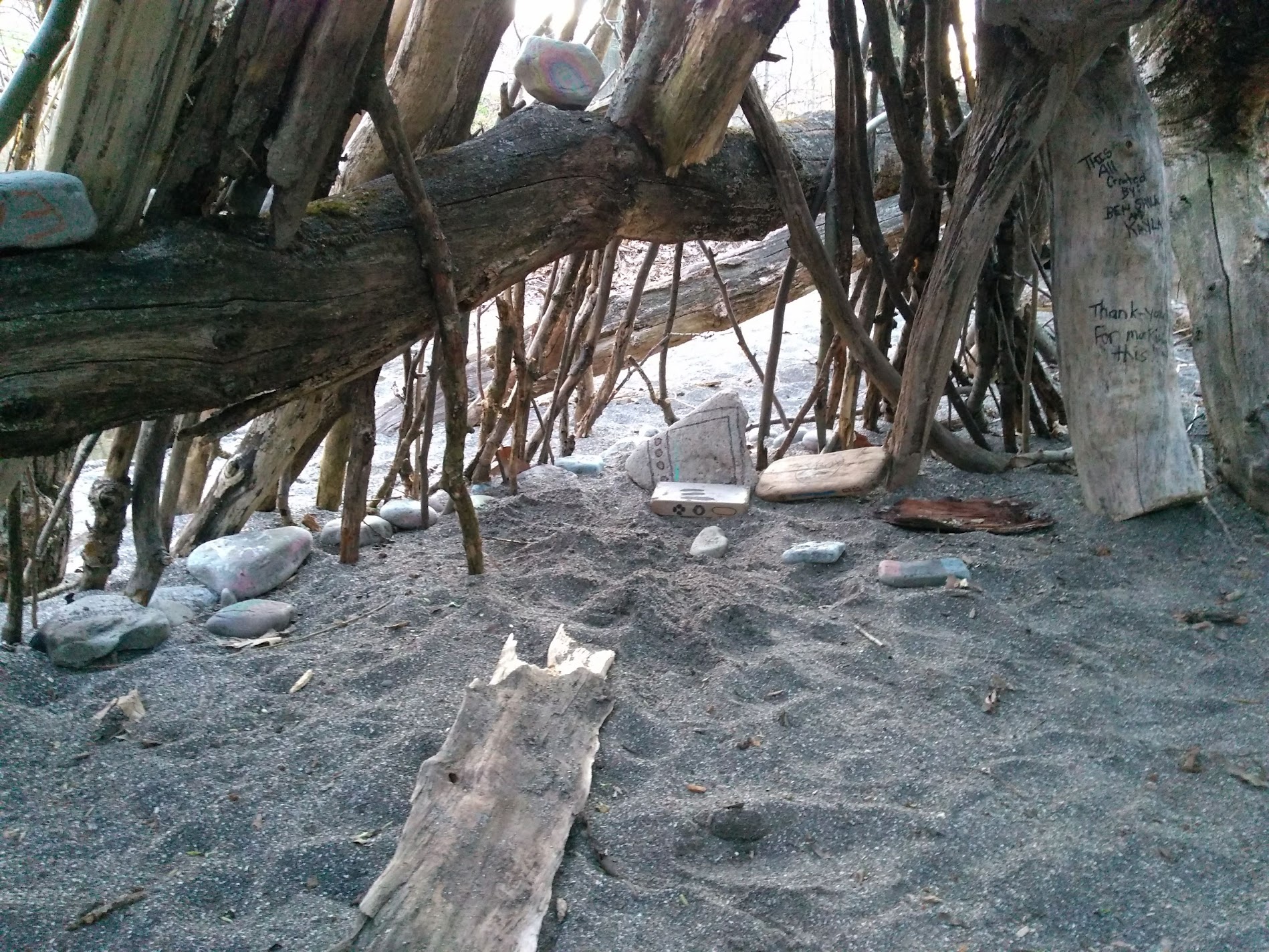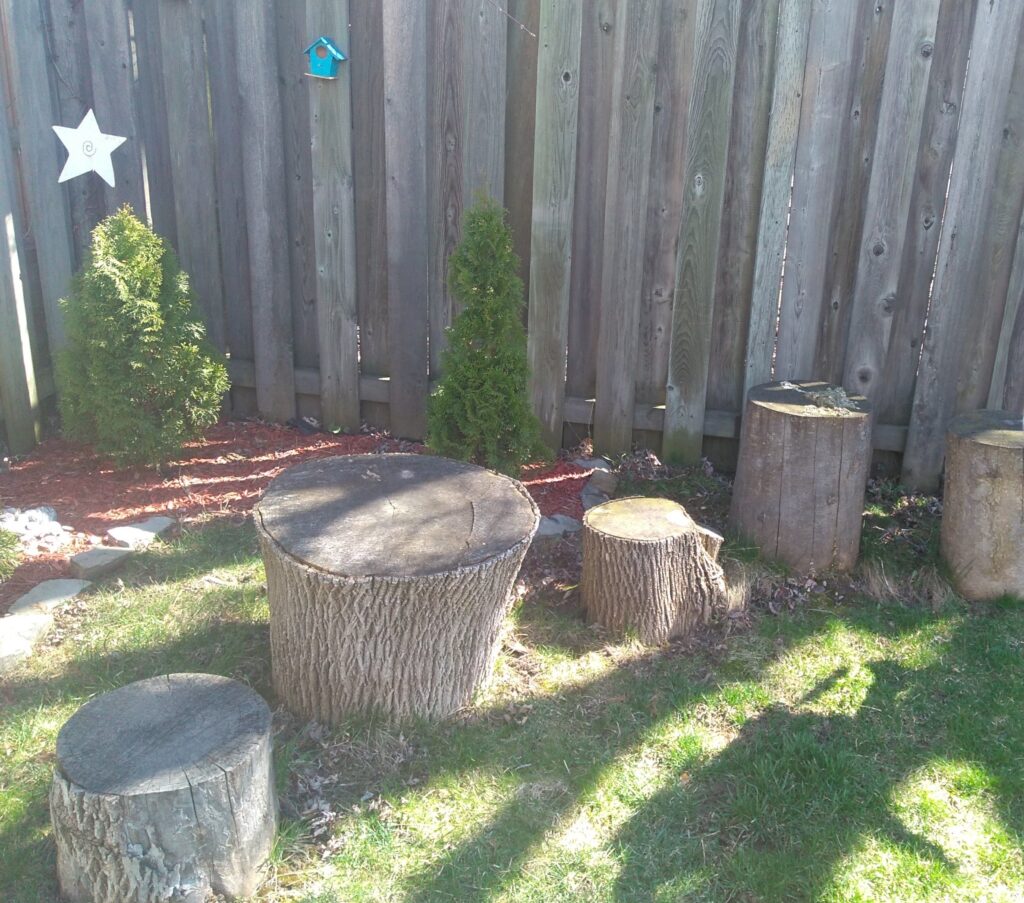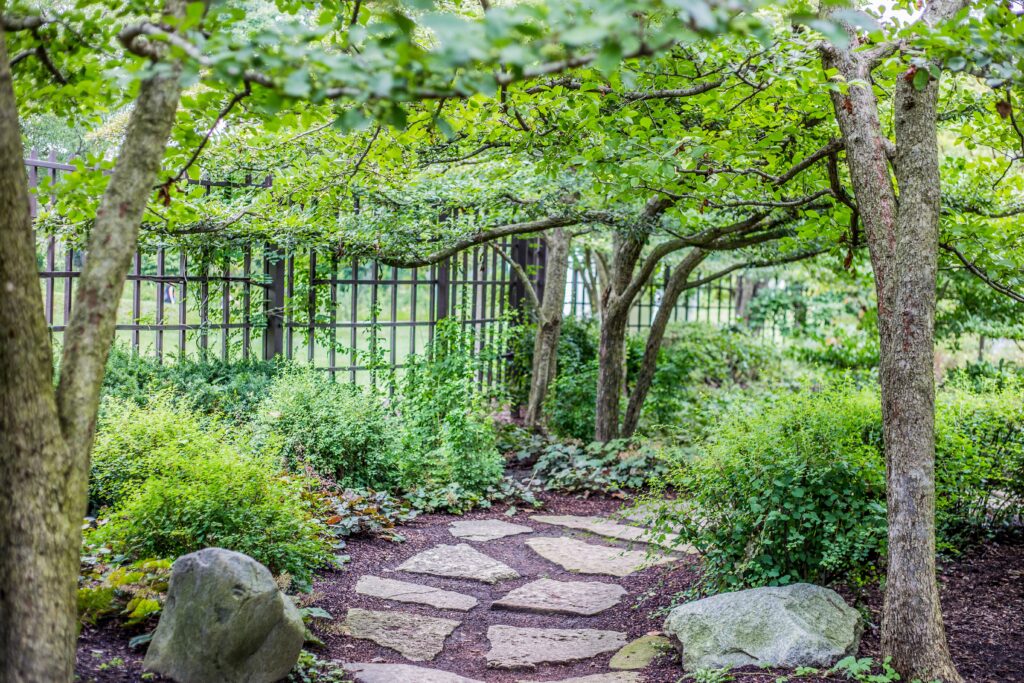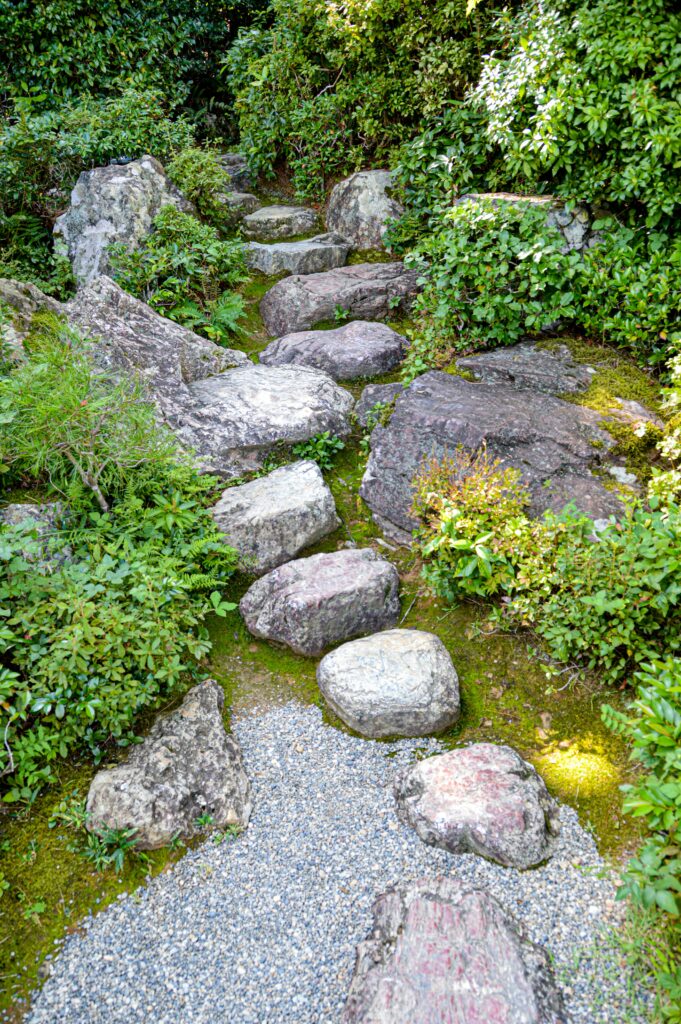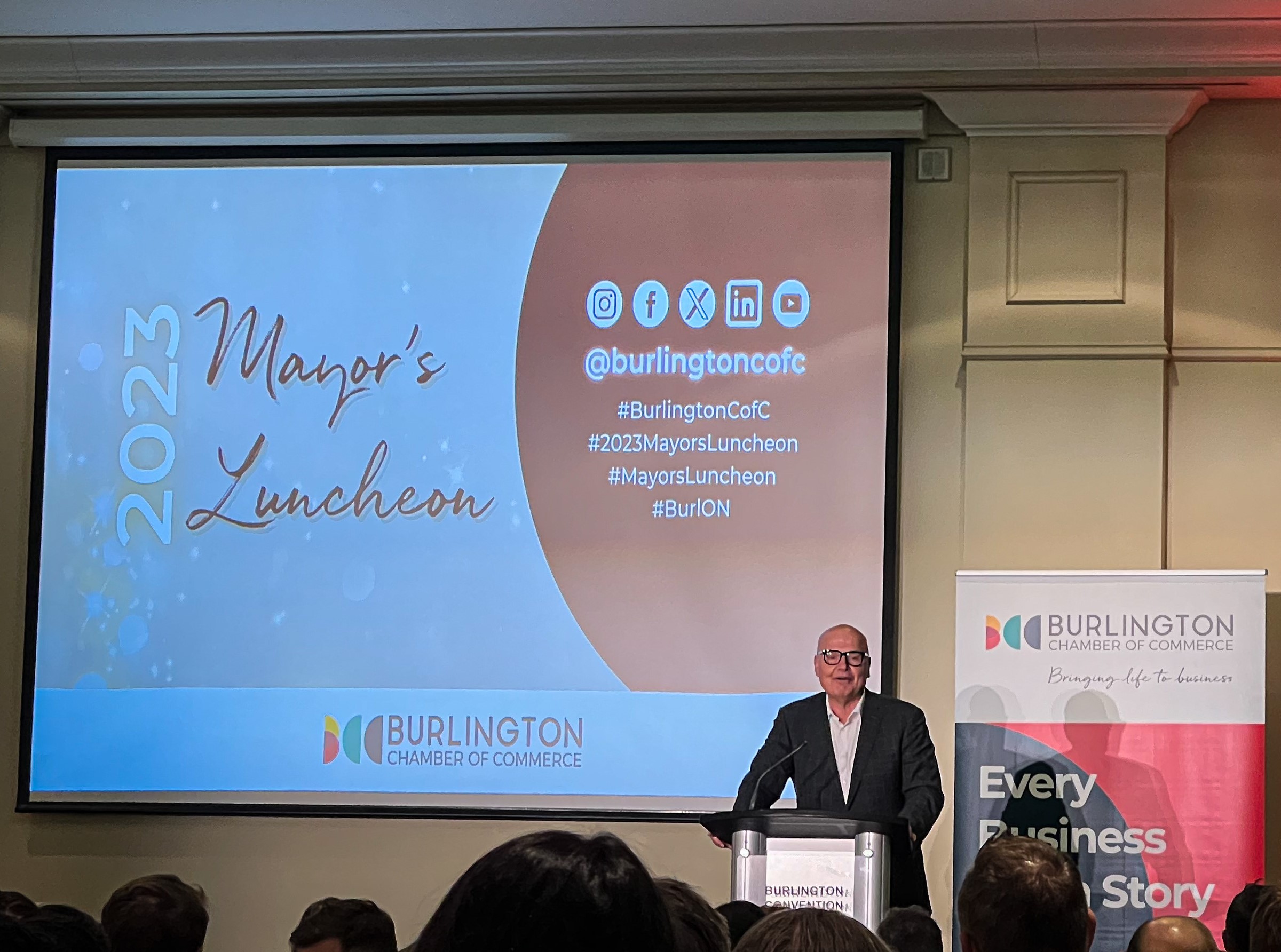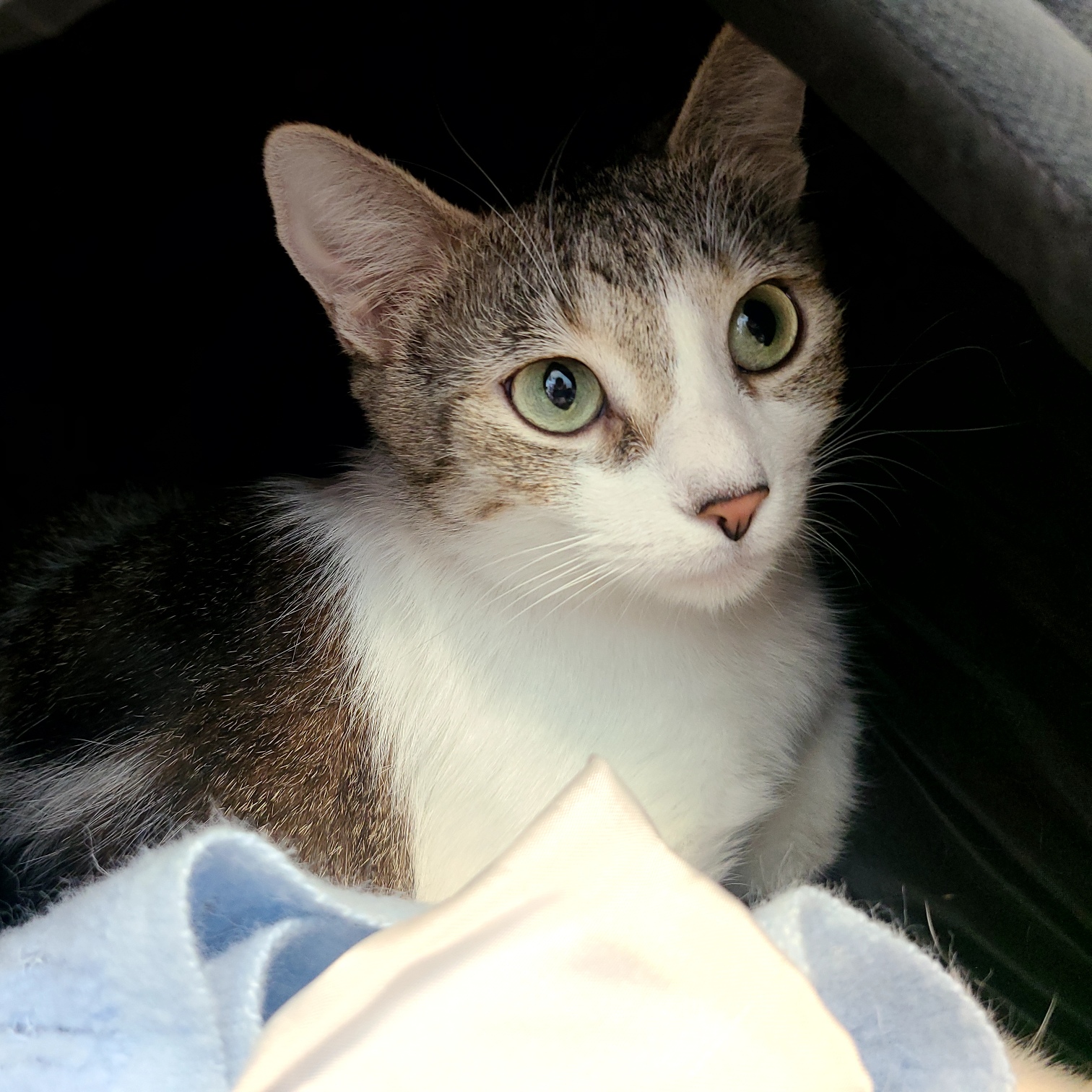By Janet Mackey, Halton Master Gardener
The rewards for re-thinking our outdoor spaces have been shown to have a positive impact on the emotional well-being of children as well as a lifelong commitment to sustainability. Children who have access to natural areas will develop empathy for other creatures, develop a sense of responsibility in caring for living things and an understanding that we all share Earth as our home. Read more about the benefits of outdoor play here.
Take a look at your outdoor space and how children use it. Where do you see them linger? What types of play (i.e., active and quiet) do they get involved in? The following suggestions are meant to be considered in an existing space or new landscape. Allow your children to be involved in the design. Invite them to draw maps, build the play area using blocks or walk through the space to discuss it together.
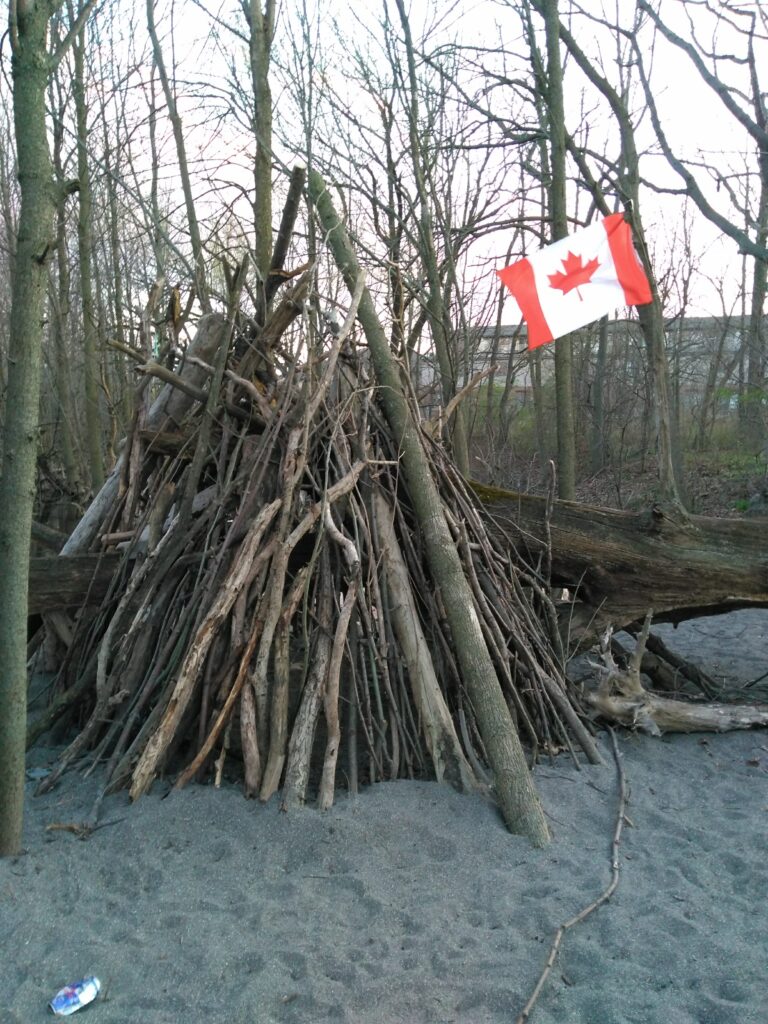
Elements of play landscapes
Water
- Make use of a bucket, wagon, or wheelbarrow to provide water access.
- Add cups, pitchers and jugs to move the water.
- Set a limit on how much water is used and remind children that water is a precious resource not to be wasted or dumped (e.g. three fill-ups of the wagon).
- Create a garden water feature such as a pondless waterfall, a butterfly water station or a swale.
Sensory
- Use different materials to cover paths or play surfaces, such as pea gravel, shredded bark mulch, moss, bare earth, and stone for them to enjoy the textures or sounds as they walk and run.
- Include a variety of herbs, flowering shrubs, and herbaceous plants that have pleasant aromas (see a list here).
Tools and loose parts
- Cut down adult tools to the appropriate size so kids can really help with garden chores.
- Provide muffin pans for sorting and gathering, old pots for mixing, baskets of twigs or pinecones, and buckets of pebbles or shells. (These can be used to decorate pathways, create temporary artwork, edging a garden or planter, etc.).
- Gather larger sticks to create shelter.
Large muscles/active play
- Add child-sized pathways for children to move around the space — be sure some of it is concealed with shrubs or tall grass.
- Consider placing a series of pathways through your yard that are just the right size for children. This can provide opportunities for hiding, chasing, and observation as they travel through the garden. Don’t forget to consider adding a bridge!
- Consider changing the topography to create a high point or look-out or build a look-out.
Quiet space
- Allow children to create their own shelters (see shelter ideas here), whether it’s a simple rope tied between trees with a sheet or a natural shelter made up of fallen branches. These can be used for reflection, observation, and a refuge from other busy activities.
- Create a sitting/table area for children to gather, and provide tools for exploration such as magnifiers, collection containers, arts, reading, snacking, and planting. Place a base material such as wood decking, mulch, patio stone, or pea gravel to define the space.
- Conceal sitting areas by planting a row of shrubs, or make use of twig fencing.
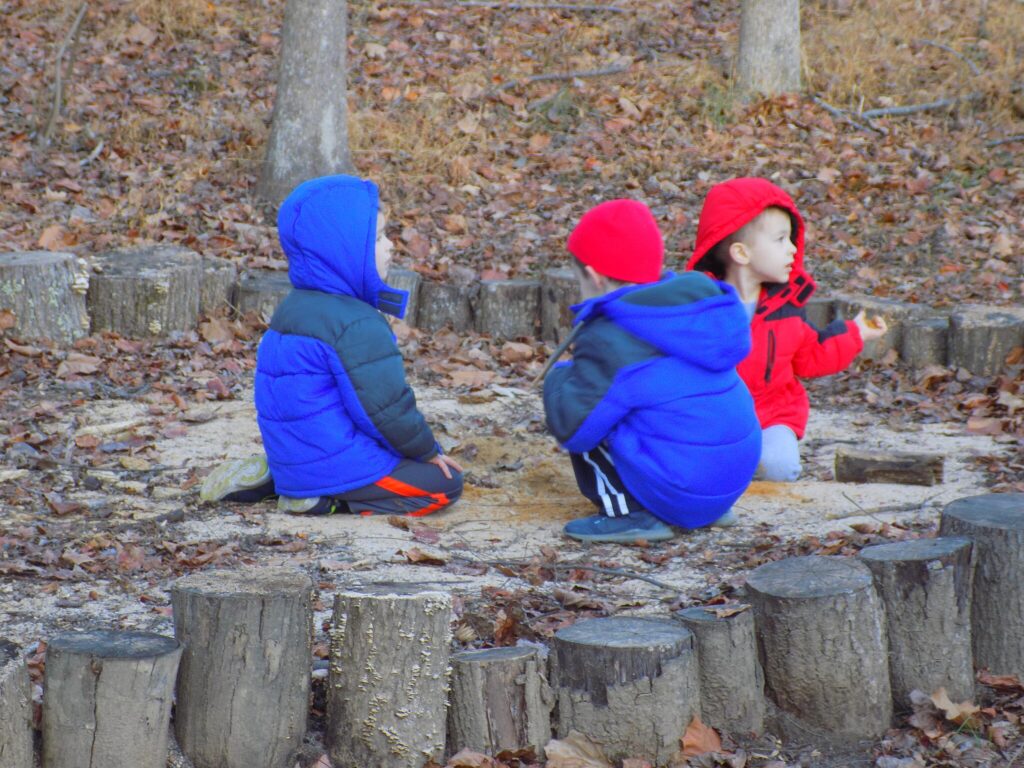
Materials
- Aggregate/stone — best for primary and secondary pathways, wheeled vehicles; higher initial cost and preparation but more durability
- Mulch (shredded bark) — best for primary or secondary paths. Not suitable for wheels; low cost but requires up-keep.
- Stepping stones — wide choice of materials (wood cookies. flagstone or precast stepping stones). Best for secondary pathways; not suitable for wheeled vehicles (click here for more details on pathways).
Gathering areas:
- Turf grass, ground covers, wood decking, pea gravel, flagstone, mulch, patio stone, etc.
Have fun and let the play space change as the children grow or new interests evolve.
Further resources:
Nature Play at Home (Ecolandscaping)
Rocking and Rolling, Fresh Air Fun & Exploration (NAEYC)
Go Wild: Things Your Kids Can Do Outside (Harris Centre for Conservation)

